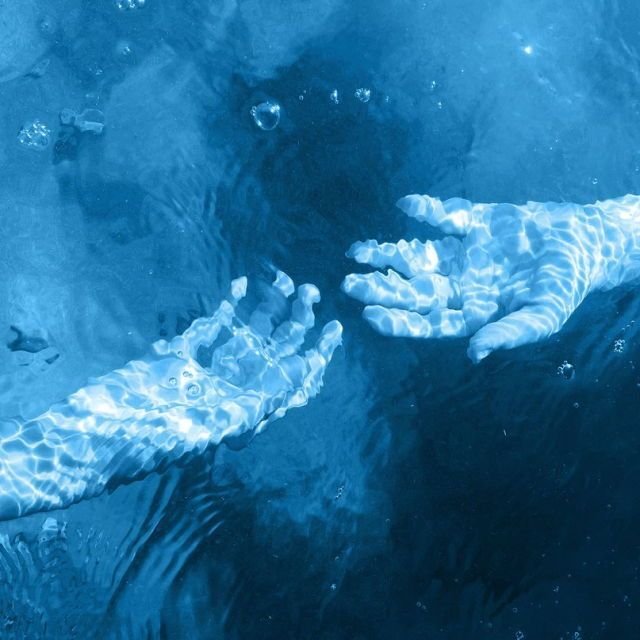( aesthetic:mimundaqrke= blue ) Blue is a color that has intrigued humanity for centuries, embodying everything from the vastness of the sky to the calmness of the ocean. Throughout art, fashion, psychology, and nature, blue carries deep symbolism and emotional resonance. Its wide array of shades offers a spectrum of meanings that influence moods, styles, and cultural interpretations. In this article, we will explore the aesthetic of blue, diving into its history, emotional impact, and various applications in the modern world.
1. The Origins of Blue as a Color
( aesthetic:mimundaqrke= blue ) The use of blue dates back to ancient civilizations. Early societies like the Egyptians prized blue for its rarity and beauty, often associating it with the divine. The creation of blue pigments from lapis lazuli stones and other natural materials made it valuable, especially for religious and ceremonial purposes. Blue’s rich history as a color of royalty and spirituality can still be felt today in many cultures.
2. Blue in Ancient Art and Culture
In Ancient Egypt, blue was considered a sacred color, symbolizing the heavens, the gods, and the afterlife. Egyptian artisans mastered the art of producing a vibrant blue pigment from ground minerals, often seen in the elaborate decorations of tombs and temples. Similarly, in Mesopotamian and Persian art, blue was used to represent divine authority and protection. It was a color reserved for the gods, the sky, and bodies of water, signifying purity and peace.
3. The Renaissance and the Blue Revolution
( aesthetic:mimundaqrke= blue ) During the Renaissance, blue became even more prominent in art, especially with the invention of ultramarine blue. Artists like Michelangelo and Leonardo da Vinci used ultramarine in their masterpieces, thanks to its brilliant hue and durability. Blue was often reserved for the Virgin Mary’s robes, symbolizing holiness, serenity, and devotion. This association with purity gave blue a lasting place in Western religious and artistic traditions.
4. The Psychology of Blue
Blue has a unique psychological impact, often associated with feelings of calmness, tranquility, and stability. Studies suggest that people exposed to blue environments tend to feel more relaxed and focused. It is known to lower heart rates and reduce stress, which is why it is commonly used in hospitals and meditation spaces. On the other hand, darker shades of blue, like navy, can evoke feelings of authority, professionalism, and trust.
5. Shades of Blue and Their Emotional Impact
From sky blue to deep indigo, the spectrum of blue offers various emotional responses. Light blue often symbolizes innocence, youth, and clarity, while darker blues are more serious, suggesting depth, wisdom, and introspection. Turquoise and teal, which blend blue with green, bring an element of healing and balance, while electric blue ignites a sense of energy and boldness.
6. Blue in Modern Art
( aesthetic:mimundaqrke= blue ) In modern art, blue has continued to play a significant role. The 20th century saw artists like Pablo Picasso embracing blue during his “Blue Period,” where he used the color to convey melancholy and isolation. Abstract artist Yves Klein became famous for his development of “International Klein Blue” (IKB), a vibrant and almost otherworldly hue that dominated his work. Blue’s versatility as an emotional and expressive color continues to inspire contemporary artists.
7. Blue in Nature
( aesthetic:mimundaqrke= blue ) In nature, blue is both rare and striking. From the endless expanse of the sky to the mysterious depths of the ocean, blue represents vastness and infinity. Blue flowers, such as cornflowers or bluebells, are prized for their beauty and rarity, while the blue morpho butterfly is an iconic symbol of biodiversity. Animals with blue coloring, like peacocks and certain species of fish, often use the color as a display of beauty and power.
8. Blue in Fashion
( aesthetic:mimundaqrke= blue ) Fashion has embraced blue as a color of versatility and sophistication. Denim, for example, has become a staple of casual wear worldwide, while navy blue suits are a symbol of professionalism and elegance. Blue in fashion is often used to communicate calm, confidence, and reliability. From pastel blue summer dresses to bold cobalt blue evening wear, the color can be adapted for any occasion or style.
9. Blue and Its Cultural Symbolism
( aesthetic:mimundaqrke= blue ) Different cultures interpret blue in various ways. In Western cultures, blue is often linked to sadness and melancholy, as in the phrase “feeling blue.” However, it also represents loyalty and trust, which is why it is frequently used in corporate branding. In Eastern cultures, blue can symbolize immortality, spirituality, or tranquility. In Hinduism, the god Krishna is depicted as blue, representing the vastness and eternity of the sky and ocean.
10. Blue in Religion and Spirituality
( aesthetic:mimundaqrke= blue ) Blue has been a color of deep spiritual significance across religions. In Christianity, blue is often associated with the Virgin Mary, symbolizing her purity and divine motherhood. In Judaism, blue represents the divine, with blue threads woven into traditional garments as a reminder of God’s commandments. In Buddhism, blue represents calmness and peace, often associated with meditation and enlightenment.
11. The Use of Blue in Branding and Marketing
( aesthetic:mimundaqrke= blue ) Many companies choose blue for their logos and branding because of its associations with trust, reliability, and professionalism. Tech giants like IBM, Facebook, and Twitter use blue as their primary color to convey stability and credibility. Blue is also widely used in industries such as finance, healthcare, and education, where trust and dependability are key. This strategic use of blue in branding underscores its psychological power.
12. The Calming Influence of Blue Spaces
( aesthetic:mimundaqrke= blue ) Interior designers often use blue in spaces where relaxation is key. Bedrooms and bathrooms are commonly painted in soft shades of blue to promote calmness and a sense of retreat. Blue has also been used in workspaces to encourage productivity and focus without the anxiety that brighter, more stimulating colors can provoke. The versatility of blue makes it a favorite choice for environments where peace and calm are desired.
13. The Meaning of Blue in Language and Expression
( aesthetic:mimundaqrke= blue ) Blue has found its way into many expressions and idioms in various languages. In English, phrases like “out of the blue” refer to something unexpected, while “blue blood” denotes aristocracy or nobility. The word “blue” itself has become synonymous with sadness or depression, especially in cultural contexts such as the “blues” music genre, which originated from African American experiences of hardship and longing.
14. The Role of Blue in Technology and Innovation
( aesthetic:mimundaqrke= blue ) As technology has advanced, blue has come to symbolize the future, progress, and innovation. The color is often associated with high-tech gadgets and software, and it dominates user interface designs, particularly in social media platforms. Blue LED lights, invented in the 1990s, revolutionized modern lighting and screen displays, giving us the bright blue hues that now illuminate our digital world.
15. Blue and Environmentalism
( aesthetic:mimundaqrke= blue ) Blue has also become a symbol of environmental awareness, particularly concerning water conservation and the protection of marine ecosystems. Campaigns for ocean cleanup and water conservation often use blue in their logos and materials, emphasizing the connection between the color and the natural world. The color blue, representing both sky and sea, has become a visual reminder of the planet’s fragility and beauty.
16. Blue in Film and Cinematography
( aesthetic:mimundaqrke= blue ) Blue is a powerful tool in cinematography, often used to evoke specific emotions or create atmosphere. Directors like James Cameron in Avatar or Wes Anderson in The Life Aquatic with Steve Zissou have used blue to immerse audiences in fantastical worlds. Blue lighting or filters can create a cold, distant feeling, while warm, subtle blue tones can evoke a sense of intimacy and calm.
17. The Role of Blue in Music
( aesthetic:mimundaqrke= blue ) Blue has had a profound impact on music, especially with the development of the blues genre. Originating in the Deep South of the United States, the blues expressed deep emotions of sorrow, struggle, and resilience. The genre’s name reflects the mood it conveys, and over time, it has influenced countless other musical styles. Musicians like B.B. King and Muddy Waters used the emotive power of blue to shape the sound of modern music.
18. Blue in Literature
Blue has been a symbolic color in literature for centuries. Writers often use blue to signify introspection, melancholy, or yearning. In F. Scott Fitzgerald’s The Great Gatsby, the color blue appears frequently as a symbol of dreams and illusions. The vast blue sky and the characters’ longing for unreachable goals mirror the emotional complexity often tied to the color in literature.
19. The Modern Blue Aesthetic
In modern aesthetics, blue has evolved into a color that symbolizes both minimalism and futurism. The rise of the “blue aesthetic” on social media platforms like Instagram and Pinterest has seen users curate visual spaces dominated by cool tones and serene imagery. Whether it’s the soft glow of a blue neon light or the crisp, clean lines of a blue-toned photograph, this aesthetic evokes peace, sophistication, and a touch of mystery.
20. The Popularity of Blue in Social Media and Digital Art
The digital era has embraced blue, particularly in social media and graphic design. Platforms like Twitter, LinkedIn, and Facebook all use blue as part of their interface, signaling trust and professionalism. Blue filters and digital art, often seen in futuristic or cyberpunk genres, use the color to create a sense of modernity and digital coolness, blending the boundaries between reality and the virtual world.
21. Blue and Its Use in Architecture
In architecture, blue has been used to make bold statements or to integrate buildings with their natural surroundings. Structures like the Blue Mosque in Istanbul or the Santorini houses in Greece highlight how blue can be both vibrant and calming. Modern architecture often incorporates blue glass, tiles, or lighting to add a sense of innovation and sleekness to urban landscapes.
22. The Evolution of Blue in Sports
Blue is a popular color for sports teams worldwide. Teams like Chelsea FC, the Dallas Cowboys, and the Italian national football team use blue to symbolize strength, resilience, and unity. Blue uniforms are often seen as authoritative yet approachable, which may contribute to their widespread use in competitive sports.
23. Blue as a Symbol of Unity and Peace
Throughout history, blue has also been used as a symbol of unity and peace. The blue flag of the United Nations, for example, was designed to represent the organization’s goal of fostering international cooperation and harmony. Similarly, peacekeeping forces often wear blue helmets or armbands to signify their neutral and protective role in conflict zones.
24. The Aesthetic of Blue in Everyday Life
From clothing to home decor, the aesthetic of blue is pervasive in everyday life. Its calming properties make it a favorite for everything from casual wear to formal settings. Blue interiors, whether in the form of paint, furnishings, or accessories, create spaces that feel both expansive and serene. Its adaptability to different moods and settings is one of the reasons blue remains one of the most popular colors globally.
25. The Future of Blue
As we look to the future, the aesthetic of blue will likely continue to evolve. Its associations with innovation, environmentalism, and digital spaces make it a color that will be central to design and cultural expression in the coming years. Whether it’s in art, technology, or fashion, blue’s enduring appeal and versatility ensure its place as a timeless and influential color.







